Some of the links in this post may be affiliate links.
Alocasia nebula could perhaps be one of the most beautiful of the so called “Jewel Alocasias,” which are compact growing Alocasias. The color variation on the foliage reminds me of a water color painting. The heart shaped leaves and silvery green colors are truly beautiful. Keep reading to learn more about the care of this special aroid.
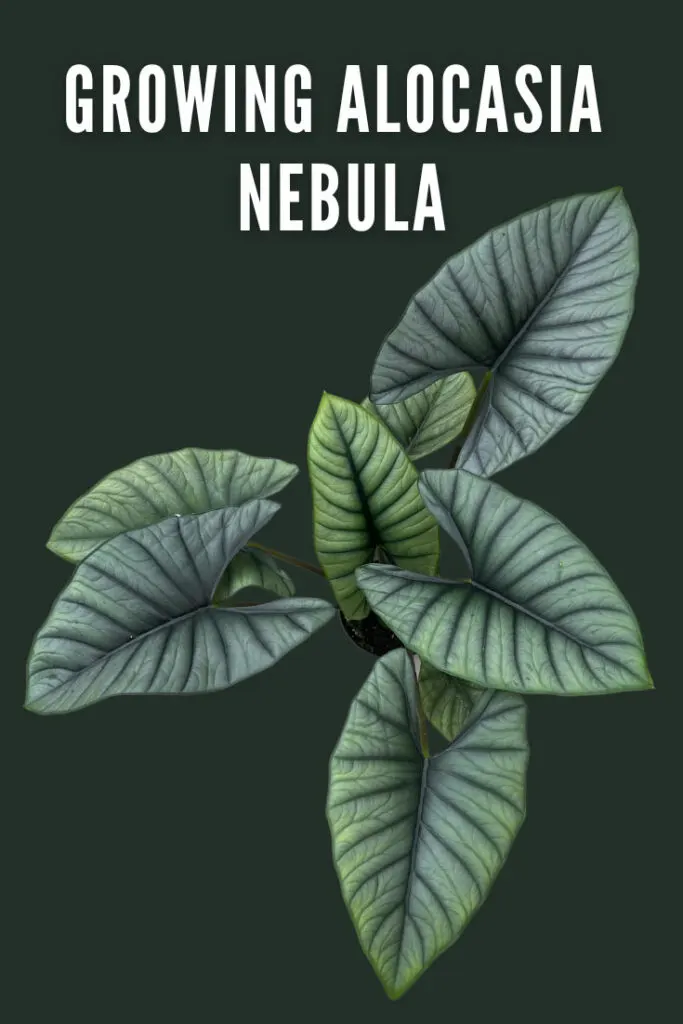
Table of Contents
NATIVE HABITAT AND GROWTH HABIT
Alocasia nebula is native to Borneo and it grows primarily in a wet, tropical biome. It was last observed in the wild in the 1990s, and since then, it remains unknown in the wild.
In the home, they will likely get about 1-2 feet tall at the most under good care.
Newer leaves will be a lighter green, and mature to a stunning bluish-green with silver highlights.
Although you may see Alocasia nebula ‘Imperialis’ sometimes being sold, there are no recognized cultivars and they are all the plain species.
ALOCASIA NEBULA CARE
1. LIGHT
Indoors, aim for an eastern facing window or western facing window for best results. In the wintertime, if you live in an area that gets dark, short days during winter, it may be beneficial to invest in a good grow light.
Alocasias tend to mope a bit during the dark days of winter, and may lose some leaves, but the plant will grow more leaves back when days start to get longer again. These plants are more resilient than many people give them credit for.
For best results in the home, never keep them far away from a window.
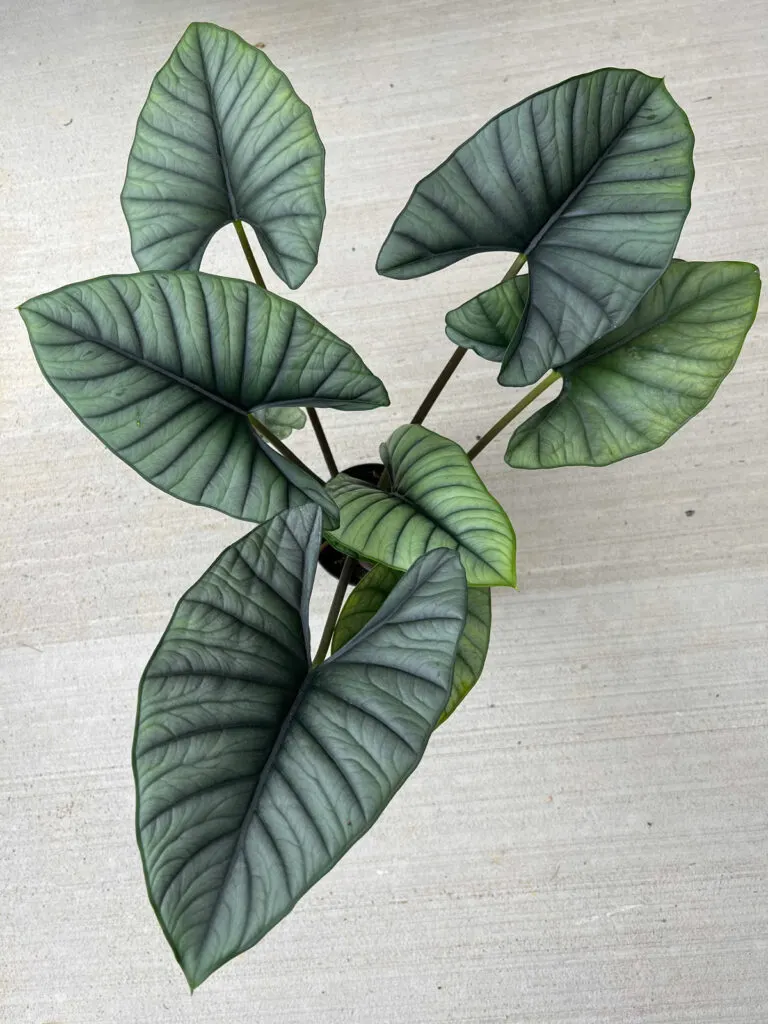
2. WATERING
You’ll need to strike a balance in watering your Alocasia nebula. Try and avoid letting the potting mix get completely dry as this will start to trigger dormancy.
On the other end, never let your plant sit in excess water, whether it is in the saucer below the plant or in a cache pot.
A good rule of thumb is to water when the top inch of potting mix has completely dried out.
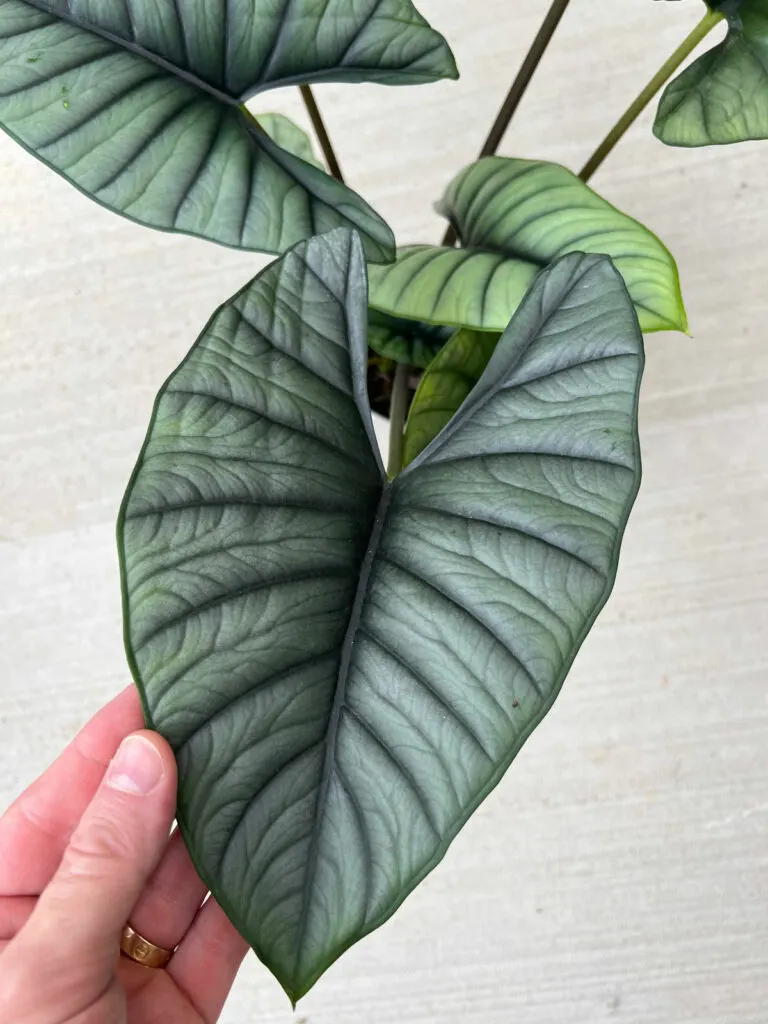
3. FERTILIZER
For all my Alocasias, including my nebula, I’ve been using Dyna-Gro Grow. I use it dilutely at 1/4-1/2 teaspoon per gallon of water at nearly every watering.
You can fertilize at a higher strength, less frequently, but I find it’s easier to do it dilutely each time so I don’t have to remember when I last fertilized.
I’ve been using Dyna-Gro Grow for years and it’s truly amazing, and you’ll see a difference in your plants.
This fertilizer contains all the macro and micronutrients that plants need, and it is urea-free so there is no risk of burning when used as directed.
During the wintertime if your plant has slowed down and isn’t growing much, you can refrain from fertilizing until days get longer again and growth resumes.
If you’re growing your nebula under a grow light year-round, your plant will have no idea its winter, and you can safely fertilize year-round.
4. TEMPERATURE
In its native Borneo, temperatures typically range from 48°-88°F (9°-31°C), with minimum temperatures never going below 45°F (7°C).
This is easily achievable in the average home. But, aim for 60°-85°F (16°-29°C) for best growth. This species is apparently prone to sudden collapse if the plant is kept too cool or waterlogged.
Always avoid any cold drafts from vents or doors and try and maintain an even, growing environment.
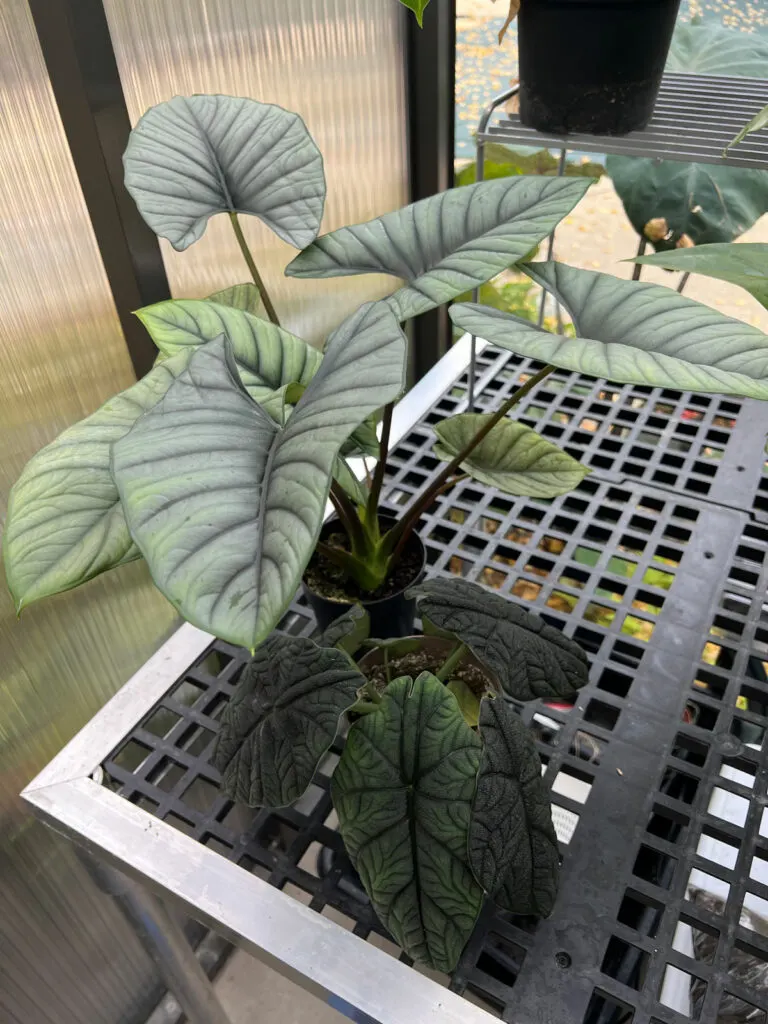
5. HUMIDITY
Alocasia nebula does enjoy higher humidity than the average home can usually provide. In its native environment, humidity is typically between 60-70%.
Alocasias detest dry air, so make sure that you increase humidity, especially during the dry air of winter months.
And remember that misting does NOT
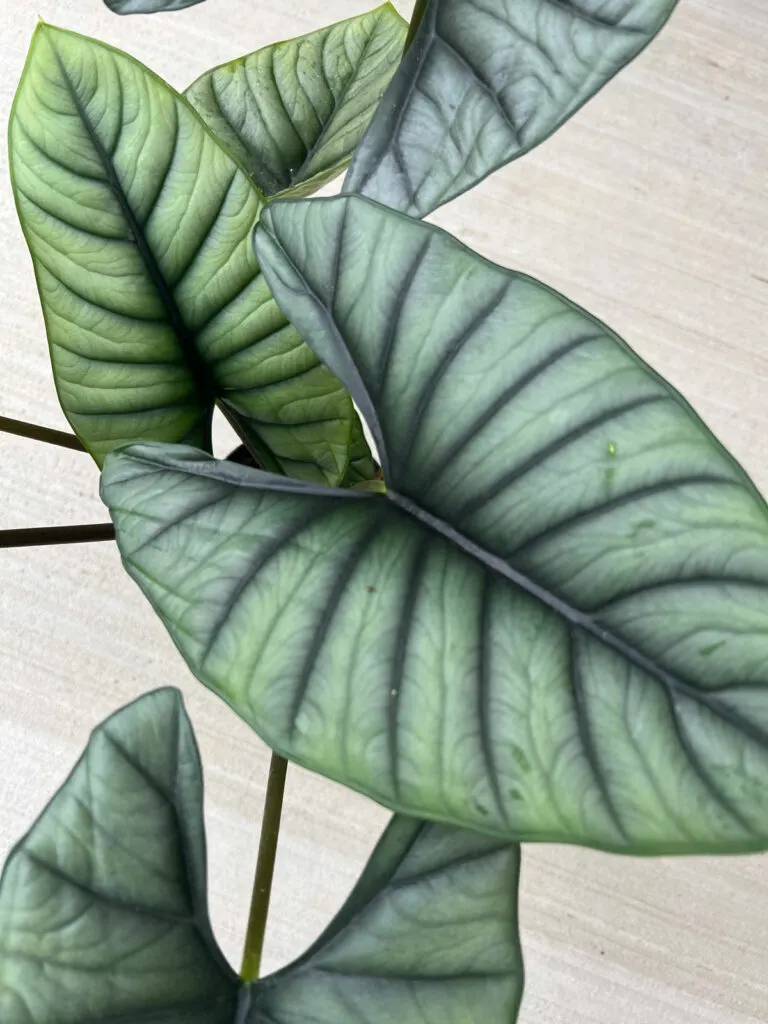
6. POTTING MIX
Everyone seems to have their own blend of aroid potting mix. A standard blend which works well for Alocasia is equal parts of an all-purpose potting mix, perlite, and orchid bark.
If you don’t want to bother with mixing your own, I’ve had great success with specialized potting mix blends from Oh Happy Plants.
They formulate their mixes to imitate their natural environment. For Alocasias, I like to use the Pray For Us blend. This blend is perfect for plants that hate to dry out completely, but that don’t want to drown in water either.
With a chunky potting mix, root rot is basically a thing of the past, as long as you’re also giving your plant enough light.
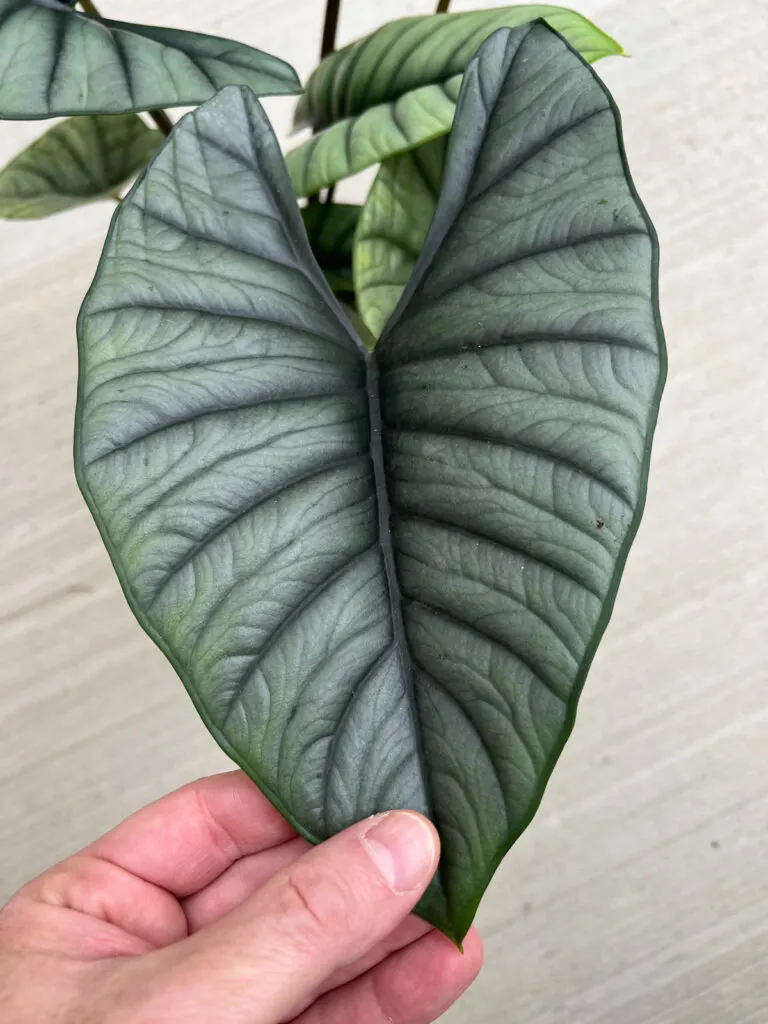
7. PROPAGATION
Alocasia nebula will self-propagate, so it takes all the guesswork out of propagation. Alocasias grow from corms, and over time they will produce little cormels right at the soil level or slightly below.
If you want additional plants, don’t separate the baby plants too soon otherwise you can stunt the plant’s growth. Wait until they’re about half the size of the parent plant before dividing your plant.
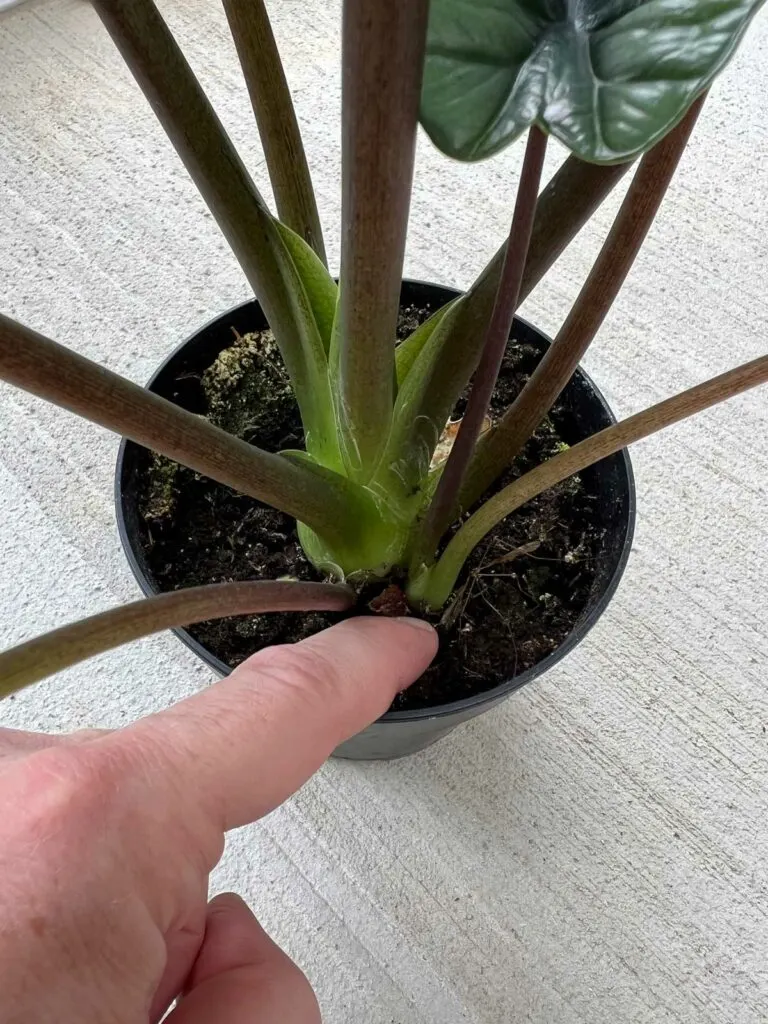
COMMONLY ASKED QUESTIONS
IS ALOCASIA NEBULA TOXIC?
Yes, it contains calcium oxalate crystals which are toxic to people and pets.
WHERE CAN YOU PURCHASE ALOCASIA NEBULA?
Proven Winners produces this plant. Although you can’t purchase directly from them, you can find a local retailer near you on the Proven Winners website.
ALOCASIA NEBULA VS DRAGON SCALE
Although they do look similar, you can see distinct differences in the photo below.
Dragon Scale has decidedly more intricate, almost quilted looking leaves. Its leaves are different shades of green, while Alocasia nebula has a bluish-gray cast to the leaves.
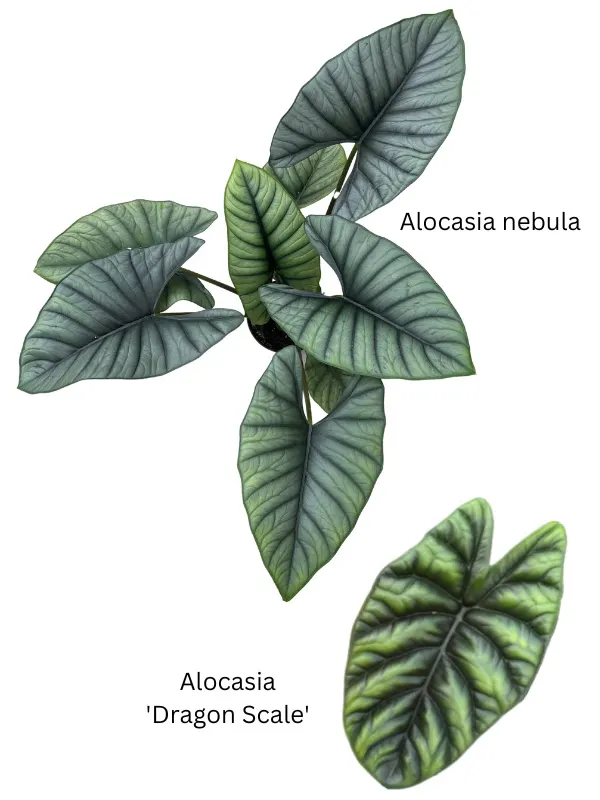
ALOCASIA NEBULA VS SILVER DRAGON
I think it’s pretty easy to distinguish Alocasia nebula vs Silver Dragon by looking at the photos below. Alocasia nebula has more distinct lobes on the foliage, while Silver Dragon’s leaves are fatter and wider.
Silver Dragon, as the cultivar name implies, also has a lot more silver in the foliage, even though they both have dark veins.
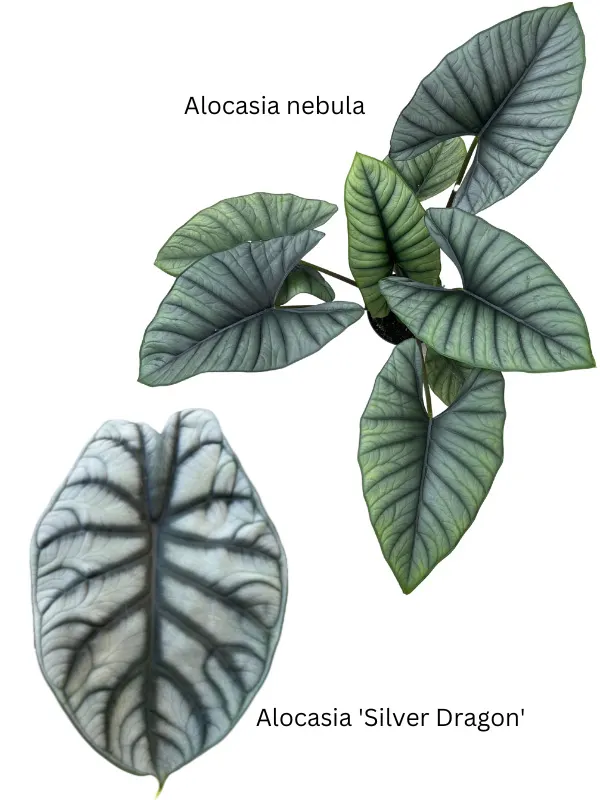
Check out my blog post on many other Alocasia varieties out there. There are so many gorgeous ones to add to your collection!
That’s all for now! Do you have an Alocasia nebula? Comment below. I’d love to hear!

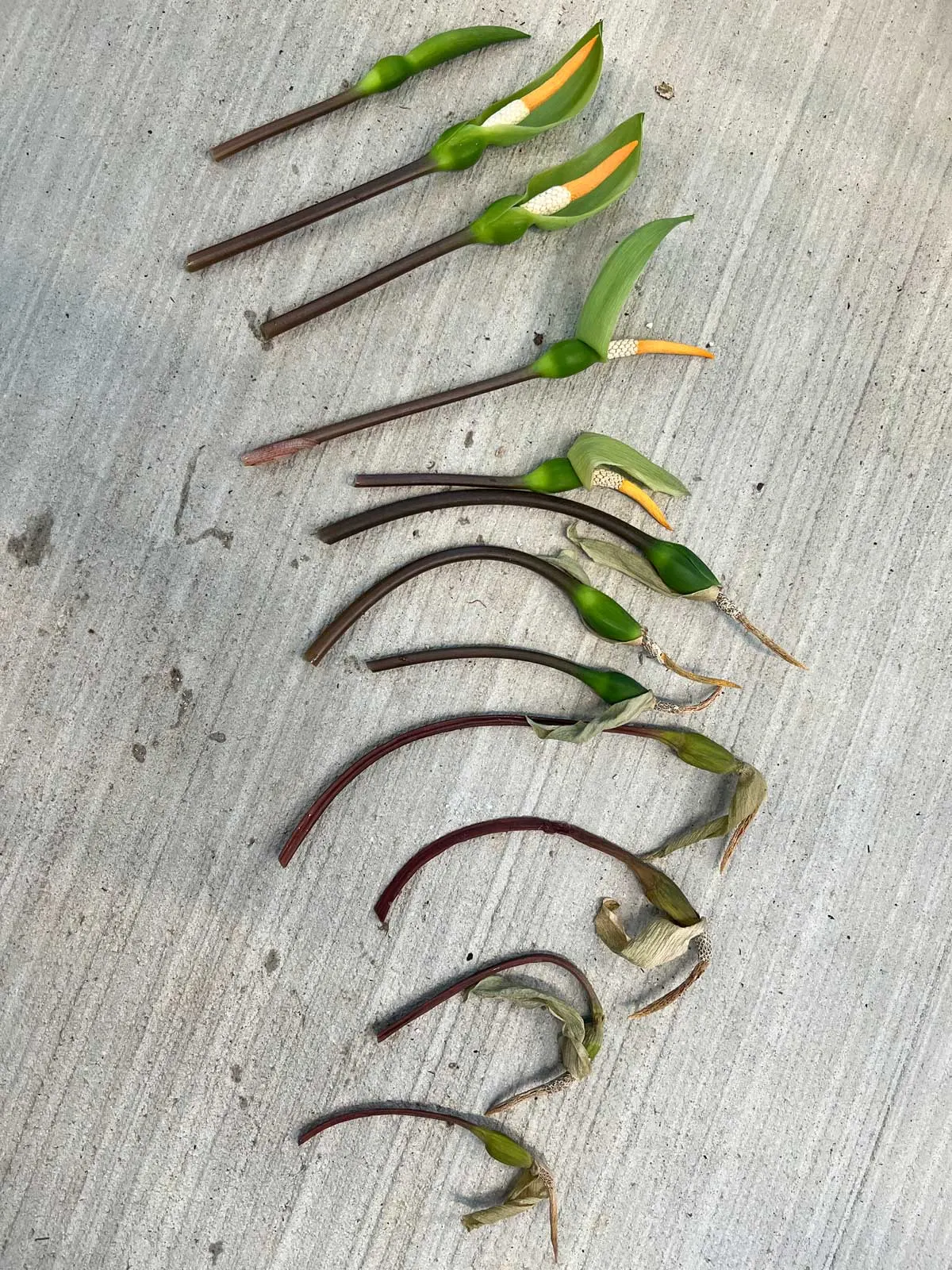
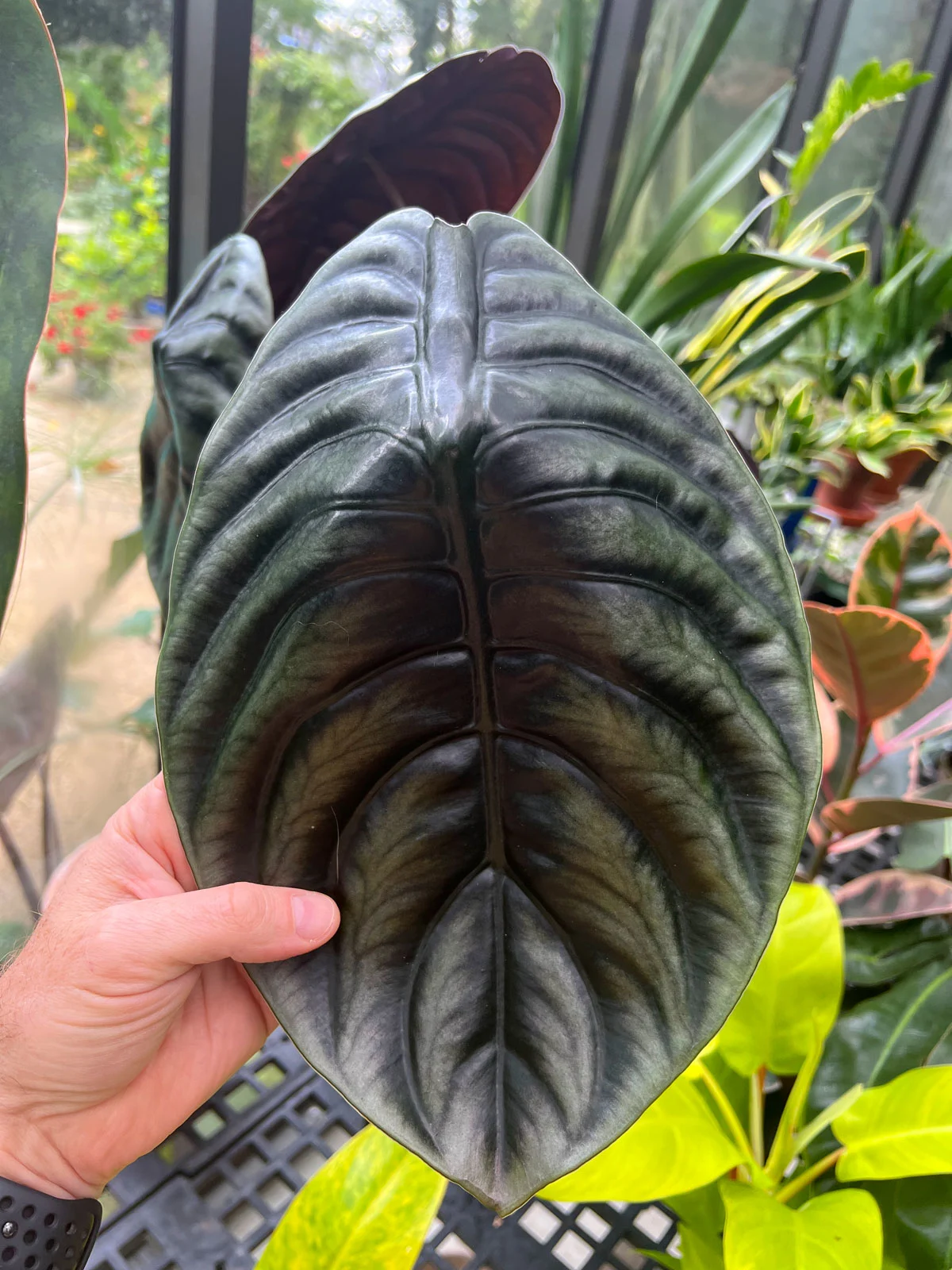
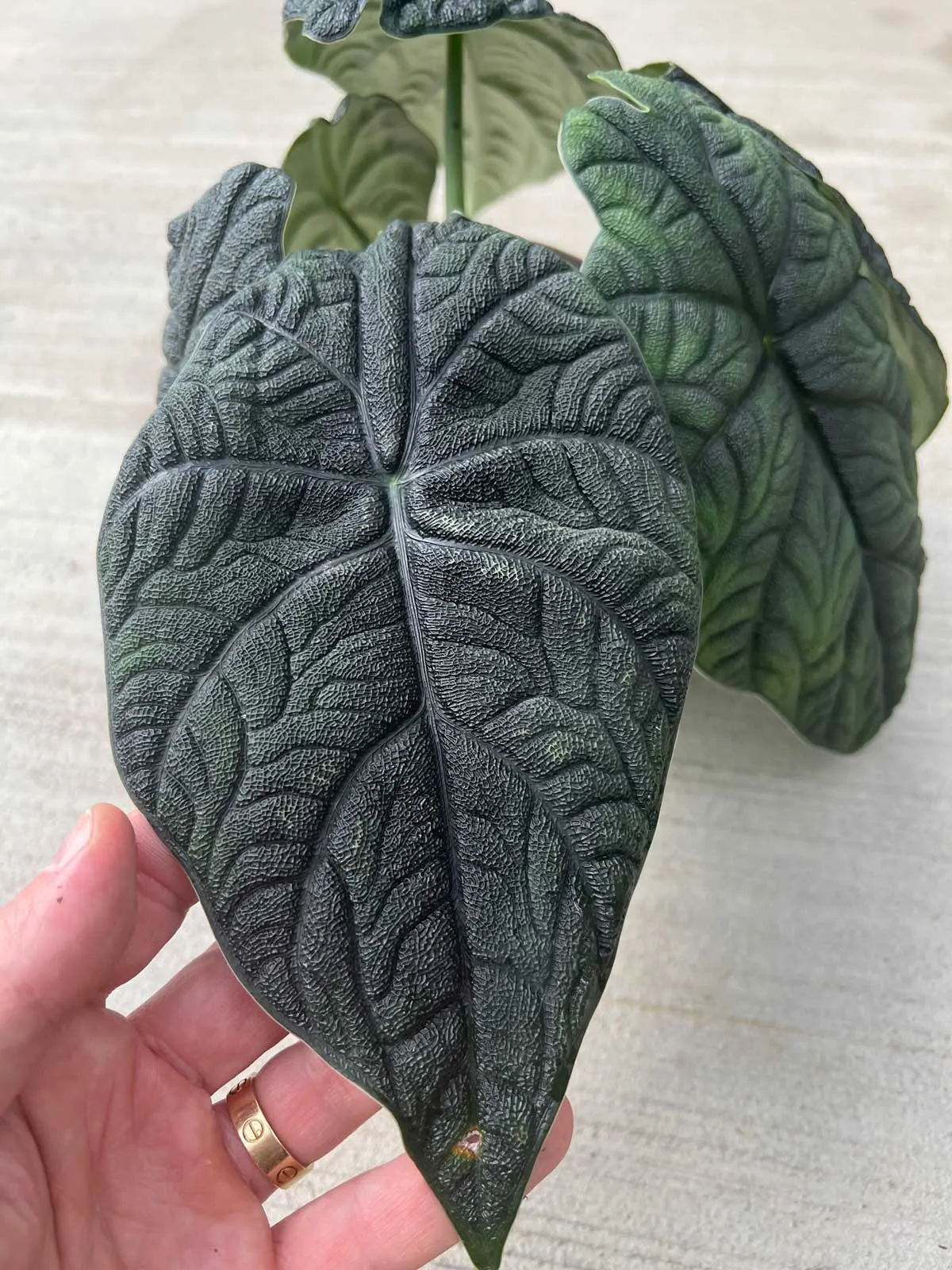
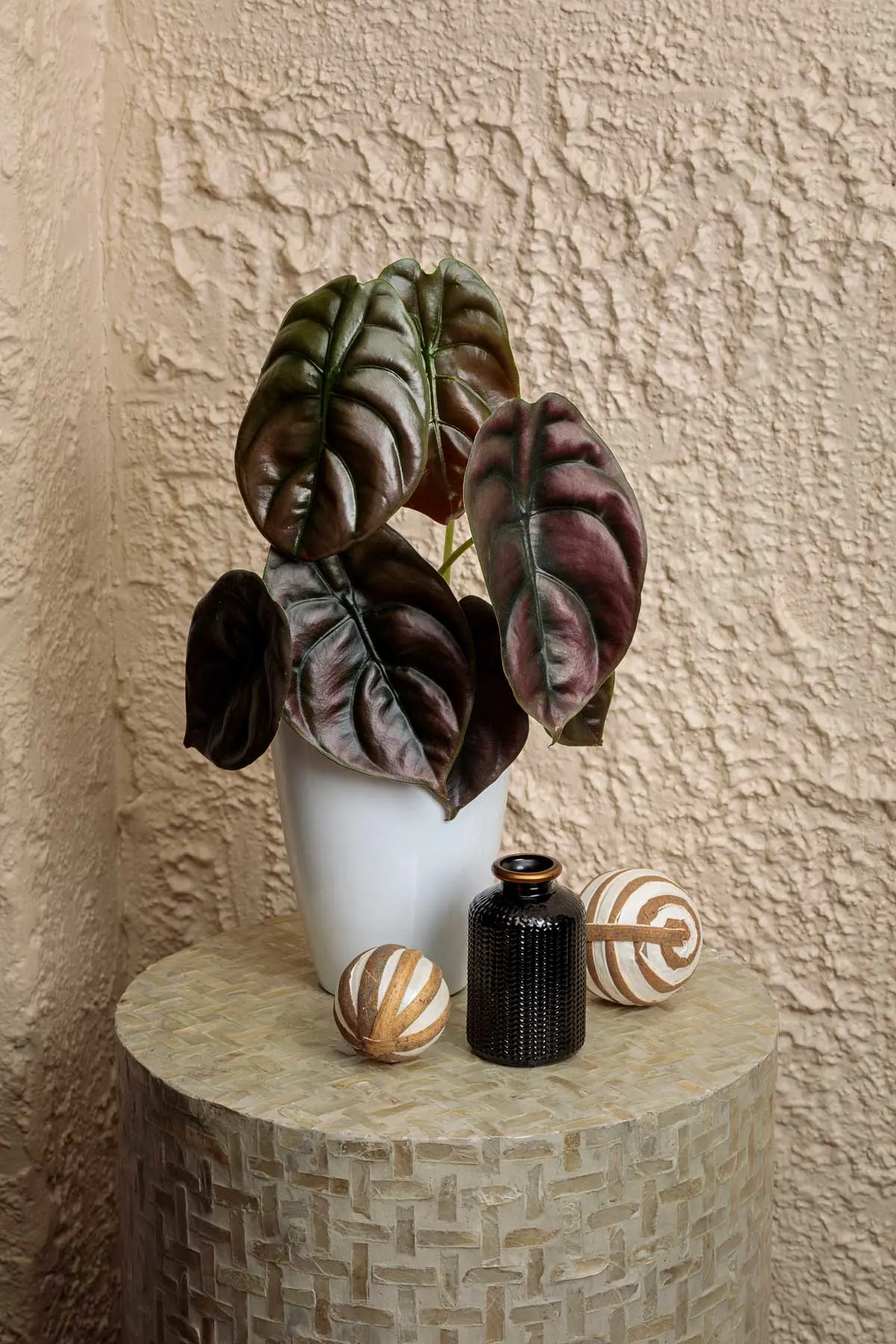
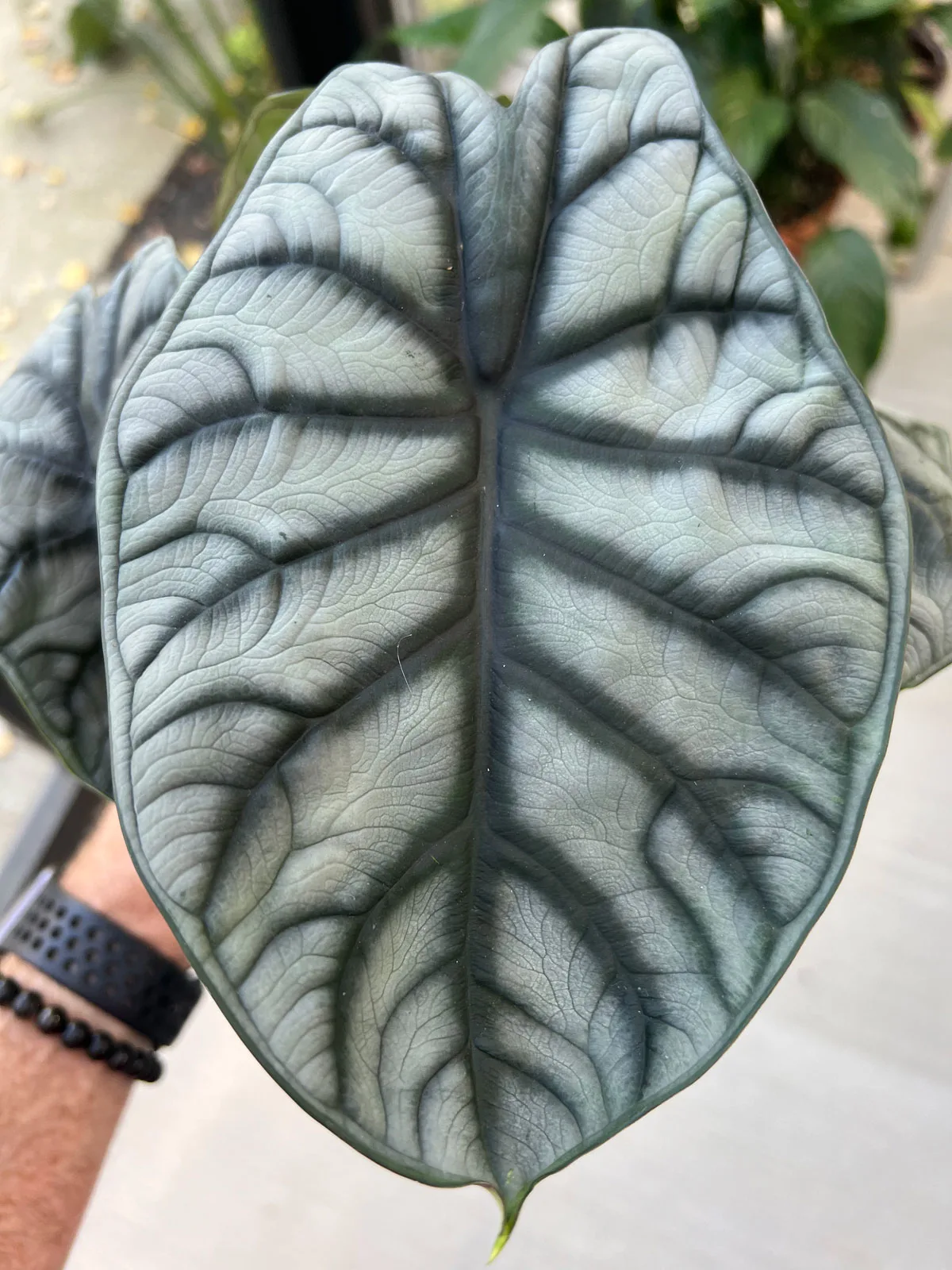
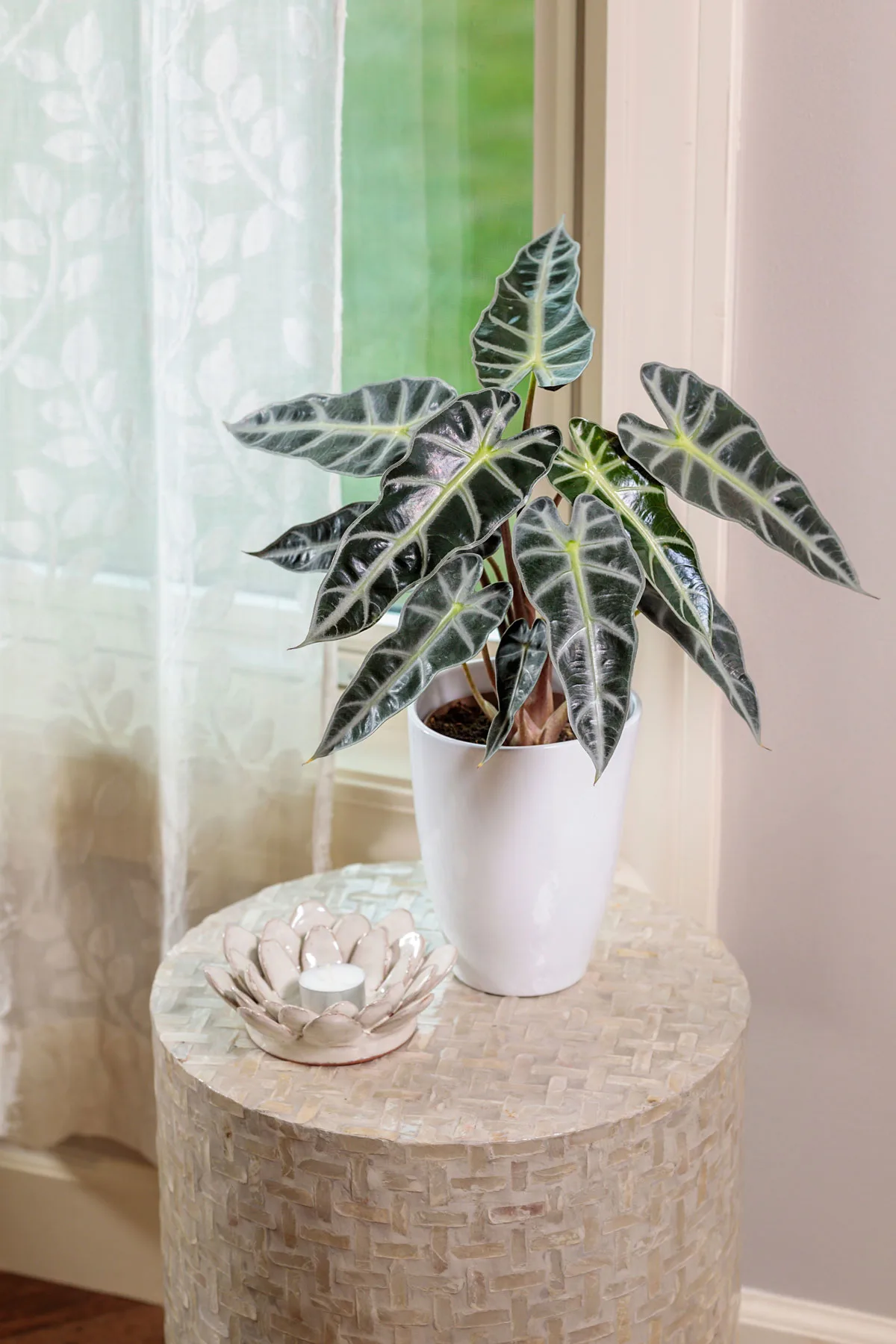
Joe
Monday 5th of February 2024
Raffaele,
I have one, actually I just brought it home and am excited to work with it. I have well over 20 Alocasia growing indoors year round and I wasn't surprised to find your information while researching this variety.
While researching some of my varieties, I often find your website in my searches and always come over to read your information. I have to say, it's always spot on.
It's rumored to be a picky variety, but with my experience with Alocasia, I'm sure I can figure out what it wants and needs.
Thanks for the information.
Raffaele Di Lallo
Tuesday 6th of February 2024
Hi Joe. Thanks for much for the kind words. I'm happy that you enjoy my content, and it sounds like you have a lovely collection! Good luck with all your Alocasia plants :-)